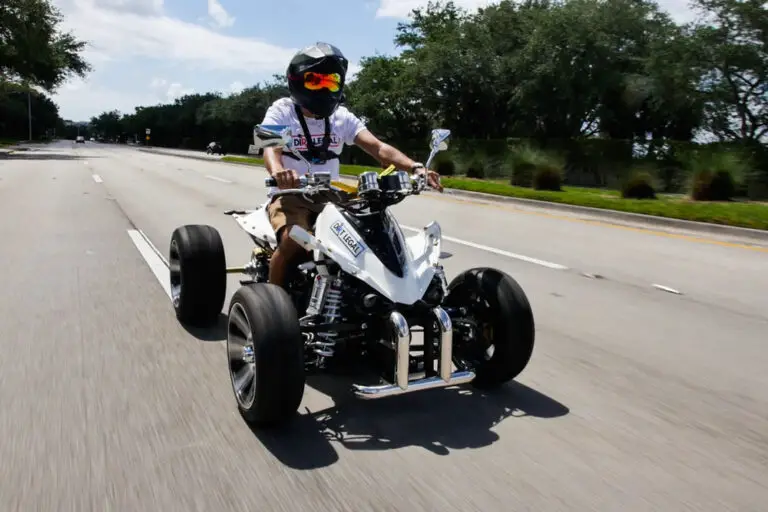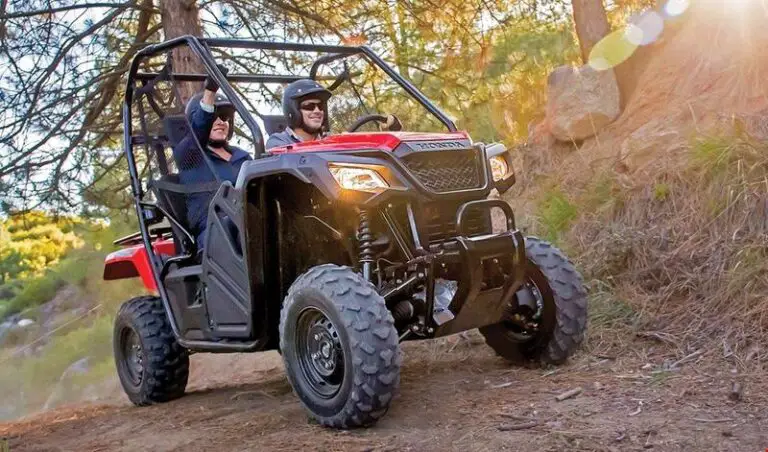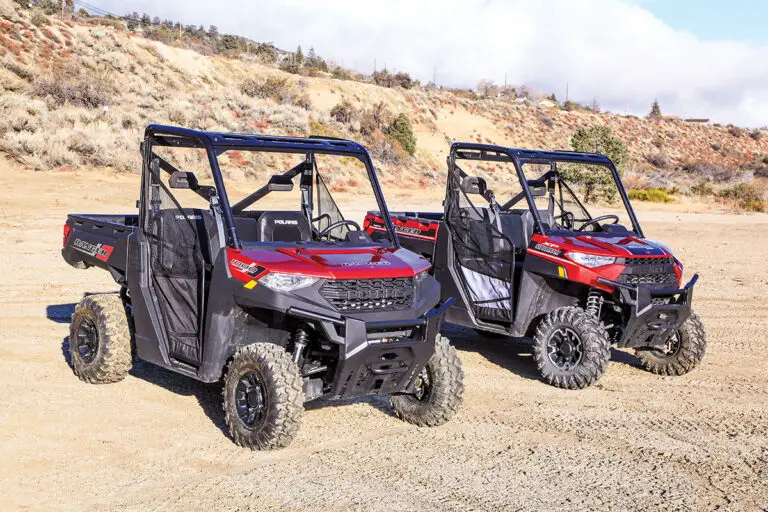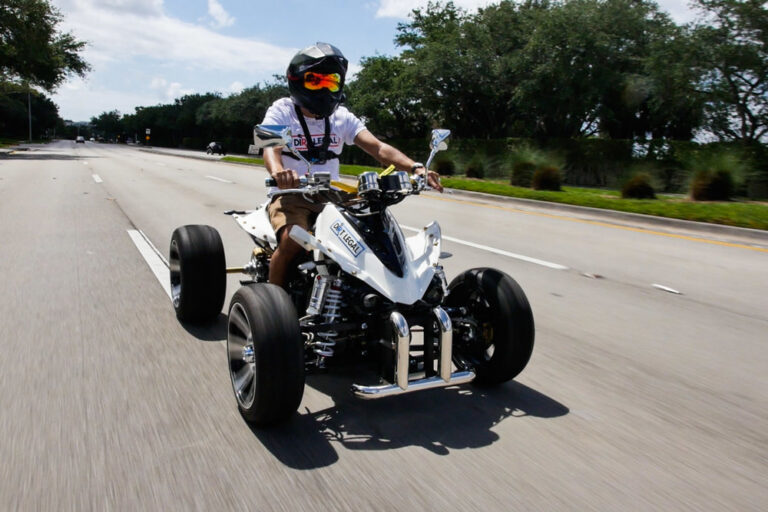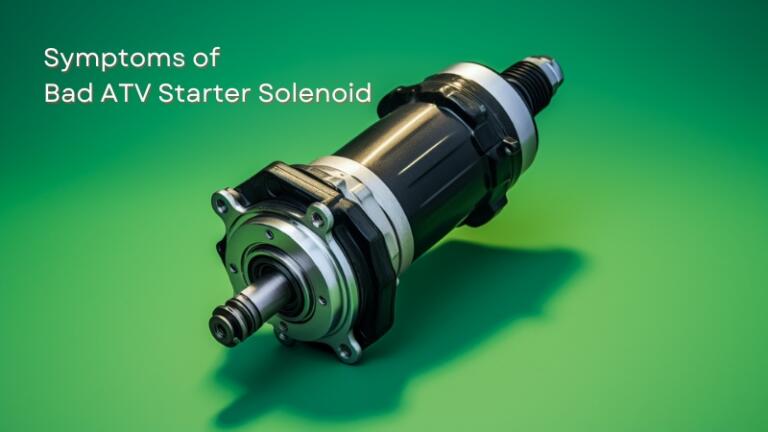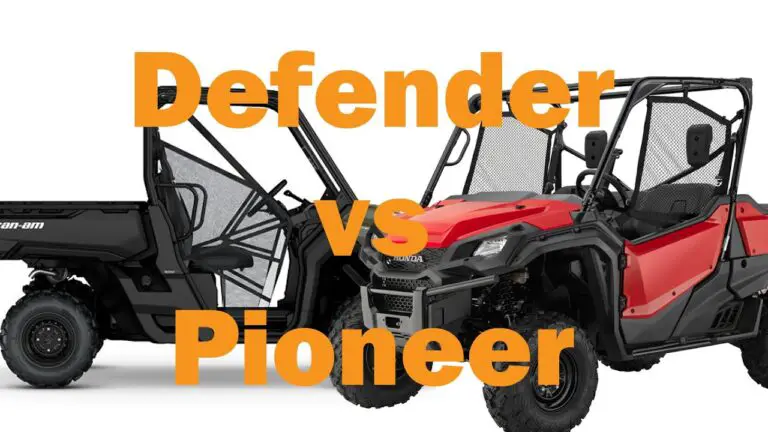How Much Does An ATV Weigh?
Things to Know About the Weight of an ATV
The weight of an ATV might be a crucial consideration in determining which ATV to purchase. The most outstanding reason is to make sure you have reliable means of transporting the ATV.
Is it light enough to fit your trailer or your truck’s bed? Do you need to acquire a truck you can transport using your small SUV? These important questions depend on an ATV’s weight.
However, it is not the only reason why you should care about an ATV’s weight.
Ensure you have the capability to lift the front or back of your ATV or, if necessary, push it up an incline. You might not want to be tied to an 850-pound machine if you are 120 pounds.
There is a significant difference between 200 and 850 pounds rolling over you. If you are going to be riding in areas where you could roll your ATV. The weight of the ATV will also, in some situations, influence how sharply you can turn and how much control you have.
How Much Does An ATV Weigh?
ATV’s weight is broken down into curb weight and dry weight. Many manufacturers fail to mention the ATV’s total dry weight. They use a term known as wet weight or curb weight, which essentially implies the same thing.
Curb weight, also known as wet weight, is the weight of the ATV.
At the same time, all fluids are present and in their proper containers, as opposed to entirely dry weight, which refers to the ATV being empty of all fluids (coolant, oil, gas, braking fluid, among others).
Common devices are included in curb weight, though neither passengers nor luggage is.
ATVs range in weight from 220 pounds – 1170 pounds when totally dry. The ATV’s dry weight is its weight without any cargo, liquids, or people on board.
A utility ATV and a recreational ATV both weigh around 700 pounds on average. An ATV’s weight is mostly influenced by the size of its engine.
Finding the ideal ATV depends on a number of factors, including weight, measurements, and engine power. Learn about and understand these variables prior to purchasing an ATV.
So relax, loosen up, and enjoy learning about ATV weights.
Let’s explore the weight of ATVs with different sizes of engines.
ATVs Weight by Class
Compiled below are as many examples of each class of ATV available. Their listed and average weights are compared and estimated.
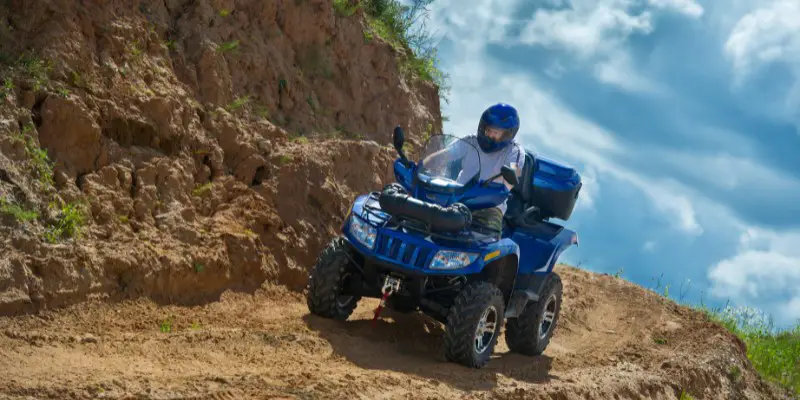
1. 50CC ATVs
Of course, the lightest entry-level ATVs for youth are the smallest. A 50cc ATV has an average weight of approximately 215 pounds. The Yamaha Raptor 50, which weighs 237 pounds, is the heaviest 50cc ATV available. The Suzuki QuadSport Z50, which weighs just 174 pounds, is the lightest 50cc ATV available.
The majority of the ATVs I saw weighed between 210 and 225 pounds.
2. 70CC ATVs
There aren’t too many name-brand ATVs available in the 70cc range. Those 70cc ATVs weigh, on average, roughly 250 pounds.
3. 90CC ATVs
This size of ATV for kids is perhaps the most common. A 90cc ATV has an average weight of 265 pounds. The AlphaSports Daisy 90, which weighs 289 pounds, is the heaviest 90cc ATV available.
The Bombardier DS 90, which weighs 249 pounds, is the lightest by a single pound. Most of the 90cc ATVs available weighed between 250 and 260 pounds, with only a few heavier outliers altering the average.
4. 200CC ATVs
The bigger youth models are introduced in the 200cc class, although there isn’t a lot of selection there. A 200cc ATV has an average weight of 365 pounds.
Once more, an anomaly in the form of the incredibly light Yamaha Blaster, which weighs only 250 pounds, throws off the average. The Polaris Saw Tooth topped the charts with a weight of 425 pounds, while the majority of the other 200cc ATVs are in the upper 300s or lower 400s.
5. 250CC ATVs
A 2500cc ATV has an average weight of about 410 pounds. The Honda TRX 250EX, which weighs 360 pounds, is the lightest. The Yamaha Big Bear 250, which weighs 456 pounds, is the heaviest 250cc ATV available.
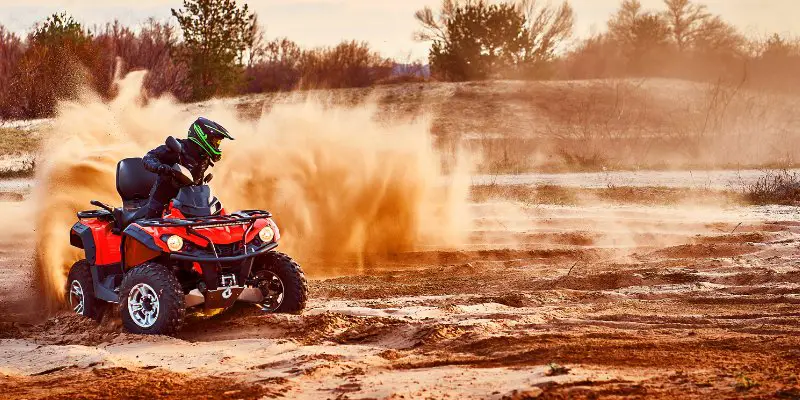
6. 300CC ATVs
There are not very many options because the 300cc ATV class isn’t very common. A 300cc ATV has an average weight of 510 pounds. The Polaris Hawkeyeot weighs 550 pounds and is the heaviest 300cc ATV available. The Arctic Cat 300, which weighs 477 pounds, is the lightest 300cc ATV available.
7. 350CC ATVs
A 350cc ATV has an average weight of 490 pounds. The Yamaha Raptor 350, which weighs 375 pounds, caused a downward bias in this number. The majority of the 350cc ATVs available weighed more than 500 pounds. The Arctic Cat 350, which measures a pretty hefty 588 pounds, is the heaviest 350cc ATV.
8. 400CC ATVs
We start moving into larger-sized ATVs at 400cc for adults. A 400cc ATV has an average weight of 495 pounds. The lightest class is where the weight variations between utility and sports models truly start to become noticeable. Arctic Cat makes the heaviest and lightest 400cc ATVs. The Sport DVX 400, which weighs 372 pounds, is the lightest. The 400 4X4 Auto, which weighs 645 pounds, is the heaviest.
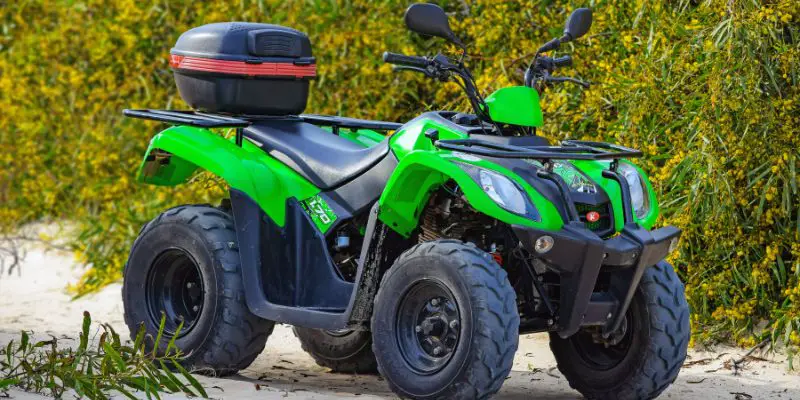
9. 450CC ATVs
The weight of a 450cc ATV varies greatly depending on whether it is a utility or sports model. A 450cc has an average weight of roughly 520 pounds. Typically, sports models weigh less than 400 pounds.
The Yamaha YFZ 450 weighs the fewest pounds of all, at 350 pounds. Utility models weigh between 500 and 700 pounds. The Polaris Sportsman 450 is the heaviest available at 696 pounds.
Wrap-up
An ATV’s weight has an impact on its cargo capacity. For instance, when traveling on a long journey, you may want to bring some cargo with you. The load capacity, however, is unique to your class and model.
The heavier your ATV is, the more load it can carry. The user manuals for each product offer information about capacity restrictions. The stability, structure, and operation of your ATV could be damaged if you exceed the weight limit. If you are looking for an ATV that can haul cargo, choose the heavier models.


